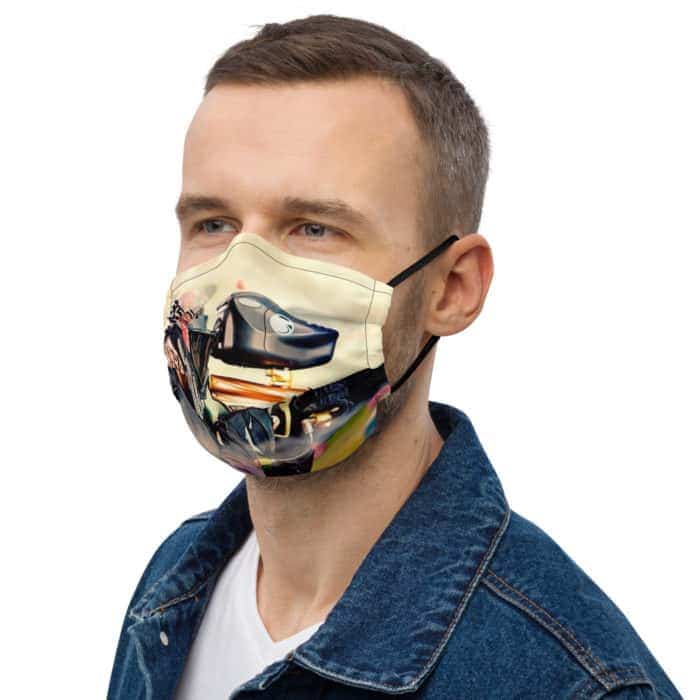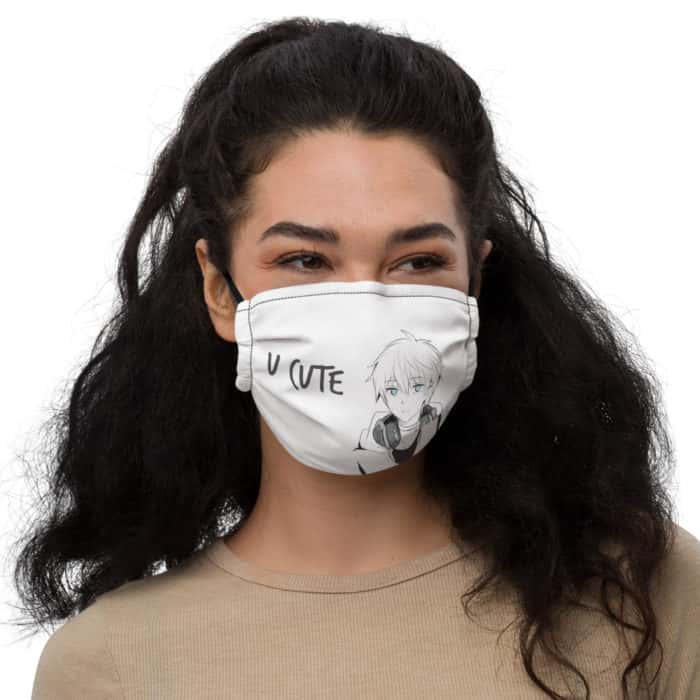The question of whether non-Japanese individuals can wear kimono has sparked curiosity and discussion. In this article, we will explore the cultural significance of the kimono, its evolution, and shed light on the perspectives surrounding its appropriation by people from different backgrounds.
1. What is a kimono and what cultural significance does it hold in Japan?
The Definition of a Kimono
A kimono is a traditional Japanese garment that dates back to the Heian period (794-1185). It is a T-shaped, ankle-length robe with wide sleeves and a wraparound design, secured by an obi belt. Traditionally, kimonos were made from silk fabric and adorned with intricate patterns or motifs.
Cultural Significance
The kimono holds immense cultural significance in Japan as it represents the country’s rich history, traditions, and sense of aesthetics. It is considered the national dress of Japan and is often worn on special occasions such as weddings, tea ceremonies, festivals, and other formal events.
Wearing a kimono reflects respect for Japanese customs and serves as a visual representation of one’s connection to Japanese culture. The garment embodies concepts such as harmony, modesty, and attention to detail – values deeply ingrained in Japanese society.
Kimonos are also seen as works of art due to their exquisite craftsmanship. The intricate designs, vibrant colors, and meticulous hand-sewn details showcase the skill and creativity of Japanese artisans. Each kimono tells a story through its patterns and symbols, reflecting elements of nature, mythology, or historical events.
2. Are there any specific rules or customs associated with wearing a kimono in Japan?
Dressing Etiquette
When wearing a kimono in Japan, there are several rules and customs to follow:
- Start by putting on the undergarments known as juban.
- Wrap the right side over the left side when wearing the kimono; the opposite is reserved for the deceased.
- Ensure that the collar is straight and symmetrical.
- Tie the obi belt firmly, creating a neat bow at the back.
- The length of the kimono should be adjusted according to height, with the hemline typically falling at the ankle.
Occasions and Colors
The choice of kimono style and color depends on the occasion:
- Furisode: A vibrant, long-sleeved kimono worn by unmarried women during formal events like coming-of-age ceremonies or weddings.
- Houmongi: A versatile kimono suitable for semi-formal occasions such as tea ceremonies or dinner parties. It features more subdued colors and patterns.
- Tomesode: A black kimono adorned with family crests, typically worn by married women during formal gatherings like weddings.
It’s important to note that certain patterns, colors, or combinations have specific meanings in Japanese culture. For example, white kimonos are often associated with funerals, while red kimonos symbolize celebration and joy.
3. Can non-Japanese individuals wear a traditional kimono?
Inclusivity of Kimonos
The beauty of cultural exchange is that it allows people from different backgrounds to appreciate and participate in each other’s traditions. Non-Japanese individuals are welcome to wear traditional kimonos as long as they do so respectfully and with an understanding of its cultural significance.
Wearing a kimono can be seen as a way to celebrate Japanese culture, promote cross-cultural understanding, and showcase appreciation for craftsmanship. It provides an opportunity for individuals to connect with Japan’s rich history and aesthetics.
However, it is essential to approach wearing a kimono with sensitivity and avoid appropriating or disrespecting the culture. Understanding the proper way to wear a kimono, respecting its customs, and appreciating its significance can help non-Japanese individuals engage in a meaningful cultural exchange.
4. Is it appropriate for non-Japanese people to wear a kimono outside of Japan?
Cultural Appropriation Considerations
The appropriateness of wearing a kimono outside of Japan depends on the context and intention behind it. While cultural appreciation is encouraged, cultural appropriation – the adoption of elements from another culture without understanding or respect – should be avoided.
If non-Japanese individuals choose to wear kimonos outside of Japan, they should do so with awareness and respect for Japanese culture. It’s important to educate oneself about the history, significance, and proper way to wear a kimono before donning one.
Additionally, engaging in dialogue with members of the Japanese community or seeking guidance from organizations that promote cultural understanding can provide valuable insights on how to respectfully wear a kimono while abroad.
5. Are there any cultural sensitivities or considerations to keep in mind when wearing a kimono as a non-Japanese person?
Respecting Cultural Sensitivities
When wearing a kimono as a non-Japanese person, it is crucial to be mindful of the following cultural sensitivities:
- Avoid altering or modifying traditional kimonos in ways that may diminish their authenticity or cultural significance.
- Avoid using kimonos as mere costumes for entertainment purposes without understanding their deeper meaning.
- Avoid using inappropriate patterns or symbols that may carry offensive connotations or misrepresent Japanese culture.
- Respect the traditional gender norms associated with certain kimono styles, such as wearing a men’s kimono as a man and a women’s kimono as a woman.
By approaching the act of wearing a kimono with cultural sensitivity and respect, non-Japanese individuals can contribute to positive cultural exchange and appreciation.
6. How can one respectfully acquire and wear a kimono as a non-Japanese individual?
Acquiring and Wearing Kimonos Respectfully
To respectfully acquire and wear a kimono as a non-Japanese individual, consider the following steps:
- Educate yourself about the history, customs, and significance of kimonos in Japanese culture.
- Seek guidance from experts or organizations that promote cultural understanding to ensure you are approaching the process respectfully.
- When acquiring a kimono, opt for authentic garments made by Japanese artisans or reputable sources that support fair trade practices.
- Learn how to properly wear a kimono by attending workshops or seeking guidance from experienced individuals who can teach you the dressing etiquette.
- Avoid appropriating or misrepresenting Japanese culture by respecting the traditional styles, patterns, and colors associated with kimonos.
By taking these steps and approaching the process with respect and understanding, non-Japanese individuals can engage in meaningful cultural exchange through wearing kimonos.
7. Are there any specific occasions or events where it is more acceptable for non-Japanese people to wear a kimono?
Situations for Wearing Kimonos
The acceptability of wearing kimonos as a non-Japanese person depends on the context and the level of understanding and respect for Japanese culture. However, there are certain occasions or events where it may be more appropriate:
- Cultural festivals or events that celebrate Japanese culture, where wearing a kimono can showcase appreciation and participation.
- Formal gatherings or ceremonies that involve cross-cultural exchange, where wearing a kimono can serve as a symbol of respect and connection to Japanese traditions.
- Tea ceremonies or traditional arts workshops, where wearing a kimono can enhance the overall experience and demonstrate an understanding of Japanese customs.
It’s essential to consider the appropriateness of wearing a kimono in different situations and ensure that it is done with cultural sensitivity and respect.
8. What are some common misconceptions or stereotypes surrounding non-Japanese individuals wearing kimonos?
Busting Misconceptions
There are several common misconceptions and stereotypes surrounding non-Japanese individuals wearing kimonos:
- “Wearing a kimono is cultural appropriation.” While cultural appropriation can occur if done without understanding or respect, appreciating and respectfully participating in another culture’s traditions should be seen as cultural appreciation rather than appropriation.
- “Only Japanese people should wear kimonos.” Kimonos have become increasingly popular among people from various backgrounds who appreciate their beauty and cultural significance. As long as they are worn respectfully, anyone can enjoy wearing a kimono.
- “Non-Japanese people cannot understand the meaning behind kimonos.” While there may be nuances that non-Japanese individuals may not fully grasp, with proper research, education, and guidance from experts, one can appreciate and understand the significance of kimonos.
It is important to challenge these misconceptions and approach the topic with an open mind, recognizing that cultural exchange can foster understanding and appreciation between different countries.
9. How have attitudes towards non-Japanese people wearing kimonos evolved over time in Japan?
Changing Attitudes
In recent years, attitudes towards non-Japanese individuals wearing kimonos have become more inclusive and accepting in Japan. While there may still be some who hold conservative views, many Japanese people now embrace the idea of sharing their culture with others.
This shift can be attributed to various factors such as globalization, increased tourism, and a growing interest in Japanese culture worldwide. Many Japanese individuals recognize the value of cultural exchange and appreciate when others show genuine respect for their traditions.
The rise of social media platforms has also played a role in promoting cross-cultural understanding. Non-Japanese individuals who share their experiences of respectfully wearing kimonos often receive positive feedback from both Japanese and international communities, fostering a sense of appreciation and connection.
10. Are there any variations or adaptations of the traditional kimono that are more suitable for non-Japanese individuals to wear?
Kimono Adaptations
While traditional kimonos can be worn by anyone with respect and understanding, there are also variations or adaptations that may be more suitable for non-Japanese individuals:
- Komon: A casual kimono with small repeating patterns all over, making it less formal than other styles.
- Yukata: A lightweight cotton kimono typically worn during summer festivals or hot weather. Yukatas are easier to wear and require less dressing expertise.
- Hakama: A wide-legged trouser-like garment often worn by both men and women for formal occasions or martial arts practice.
These adaptations offer alternatives that are more accessible and comfortable for non-Japanese individuals while still allowing them to experience the beauty of Japanese traditional clothing.
11. Can non-Japanese individuals participate in traditional Japanese tea ceremonies while wearing kimonos?
Inclusive Tea Ceremonies
Non-Japanese individuals can absolutely participate in traditional Japanese tea ceremonies while wearing kimonos. Tea ceremonies are an integral part of Japanese culture and provide a unique opportunity to immerse oneself in the traditions and aesthetics of Japan.
Wearing a kimono during a tea ceremony can enhance the experience, as it reflects respect for the customs and adds to the overall ambiance. It showcases an appreciation for Japanese culture and allows participants to fully engage in the ritualistic aspects of the ceremony.
It’s important to note that proper etiquette should be followed during tea ceremonies, regardless of one’s cultural background. This includes observing silence, bowing when appropriate, and showing respect towards the host and other participants.
12. How do Japanese locals generally react to seeing non-Japanese people wearing kimonos in Japan?
Affirmative Reactions
Japanese locals generally react positively when they see non-Japanese people wearing kimonos in Japan. Many view it as a sign of appreciation for their culture and traditions. Seeing individuals from different backgrounds embrace their national dress can evoke feelings of pride and cultural exchange.
Oftentimes, Japanese locals may approach non-Japanese individuals wearing kimonos with curiosity or admiration, eager to engage in conversations about their experiences or offer compliments. This interaction can lead to meaningful cultural exchanges and foster a sense of connection between people from different countries.
It’s important to remember that reactions may vary among individuals, but overall, wearing a kimono respectfully in Japan is likely to be met with appreciation and respect.
13. Are there any organizations or groups that provide guidance or support for non-Japanese individuals interested in learning about and wearing kimonos respectfully?
Supportive Organizations
There are several organizations and groups dedicated to promoting cultural understanding and providing guidance for non-Japanese individuals interested in learning about and wearing kimonos respectfully:
- The Japan Foundation: An organization that promotes international cultural exchange and offers resources on Japanese culture, including workshops on kimono dressing etiquette.
- Kimono Experience: A company that provides kimono rental services along with dressing assistance and cultural explanations for visitors to Japan.
- Cultural Centers: Many cities around the world have cultural centers or organizations that offer workshops, classes, or events focused on Japanese culture, including kimono dressing demonstrations.
These organizations can provide valuable insights, resources, and opportunities for non-Japanese individuals to learn about kimonos and engage in respectful cultural exchange.
14. What are some alternatives to wearing a traditional kimono for those who want to experience Japanese culture without
14. What are some alternatives to wearing a traditional kimono for those who want to experience Japanese culture without appropriating it?
Exploring Traditional Japanese Fashion
One alternative to wearing a traditional kimono is to explore other forms of traditional Japanese fashion. Japan has a rich history of clothing styles, such as yukata, which is a lighter and more casual version of the kimono typically worn in summer festivals. Another option is to try out the hakama, a wide-legged pant traditionally worn by samurais and martial arts practitioners. By exploring these alternative traditional fashion choices, individuals can still experience and appreciate Japanese culture without crossing into cultural appropriation.
Participating in Cultural Workshops
Another way to engage with Japanese culture without appropriating it is by participating in cultural workshops. Many cities around the world offer workshops on various aspects of Japanese culture, including tea ceremonies, calligraphy, flower arranging (ikebana), or even learning how to play traditional musical instruments like the shamisen or taiko drums. These workshops provide an opportunity to learn about and immerse oneself in different aspects of Japanese culture under the guidance of experts while respecting its traditions.
Supporting Local Artisans
Instead of wearing a traditional kimono, individuals can support local artisans who create modern adaptations inspired by Japanese fashion. Many designers worldwide incorporate elements from Japanese aesthetics into their designs, creating contemporary clothing that pays homage to the cultural heritage while adding a personal touch. By purchasing from these artisans or supporting local businesses that promote ethically sourced and culturally respectful products inspired by Japan’s fashion traditions, individuals can celebrate and appreciate the culture without appropriating it.
In what ways can the act of wearing a kimono by non-Japanese individuals contribute positively to cultural exchange and understanding between different countries?
Promoting Cultural Appreciation
Wearing a kimono can serve as a way for non-Japanese individuals to express their admiration and appreciation for Japanese culture. By respectfully donning this traditional garment, individuals can showcase their interest in learning about different cultures and foster a sense of understanding and respect for Japan’s rich heritage. This act can encourage conversations about cultural diversity, leading to increased awareness and appreciation for other cultures.
Building Bridges between Communities
When non-Japanese individuals wear a kimono, it can spark curiosity and interest from others who may not be familiar with Japanese culture. This presents an opportunity to engage in meaningful conversations and share knowledge about the significance of kimonos, their history, and the traditions associated with them. By initiating these dialogues, individuals contribute to building bridges between communities, fostering cultural exchange, and promoting understanding between different countries.
Encouraging Cultural Collaboration
The act of wearing a kimono by non-Japanese individuals can also inspire collaborations between artists, designers, and creators from different countries. It opens up avenues for creative exploration where traditional Japanese fashion elements can be incorporated into contemporary designs or adapted to suit diverse tastes. These collaborations allow for the exchange of ideas and perspectives while respecting the origins of the kimono, resulting in innovative creations that bridge cultural gaps and promote global cultural exchange.
Fostering Empathy and Respect
By taking the time to understand the significance of wearing a kimono and approaching it with respect, non-Japanese individuals demonstrate empathy towards another culture’s traditions. This empathetic approach fosters mutual respect between cultures by acknowledging the importance of preserving cultural heritage while encouraging cross-cultural interactions. It helps break down stereotypes and promotes acceptance among diverse communities by highlighting shared values such as appreciation for beauty, craftsmanship, and tradition.
Overall, when approached with sensitivity and respect, wearing a kimono or exploring alternative ways to experience Japanese culture can contribute positively to cultural exchange and understanding between different countries. It allows for the celebration of diversity, promotes empathy and respect, and creates opportunities for meaningful conversations and collaborations that bridge cultural gaps.
In conclusion, the answer is yes! Non-Japanese individuals can absolutely wear a kimono. Embracing different cultures and traditions through fashion is a wonderful way to appreciate diversity. If you’re interested in exploring the world of kimono or other cosplay products, feel free to check out our collection. We’d love to help you find the perfect outfit! Don’t hesitate to get in touch with us if you have any questions or need assistance. Happy cosplaying!
N/A
N/A
N/A
N/A
N/A
N/A
N/A
N/A
N/A
N/A
N/A
N/A










